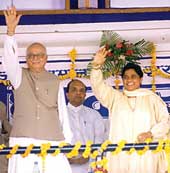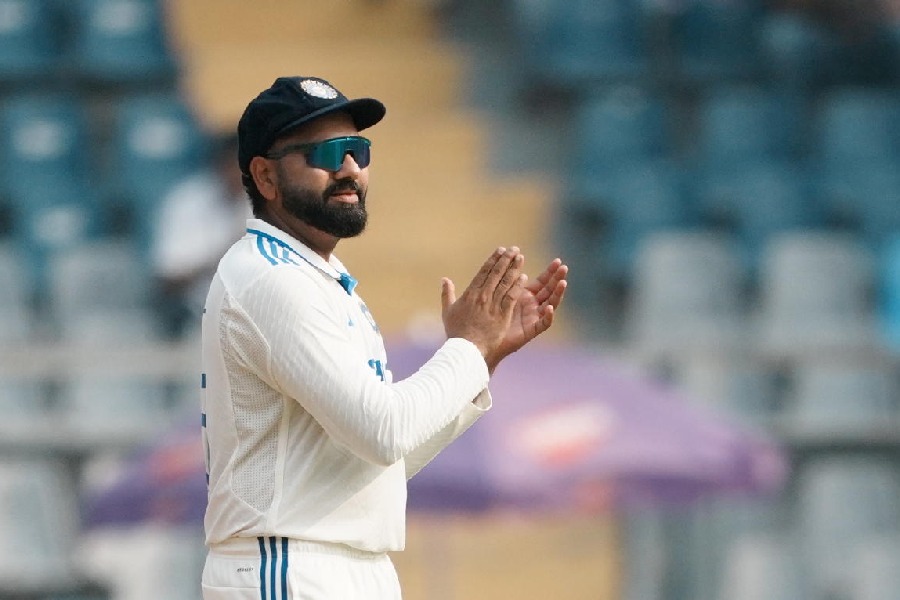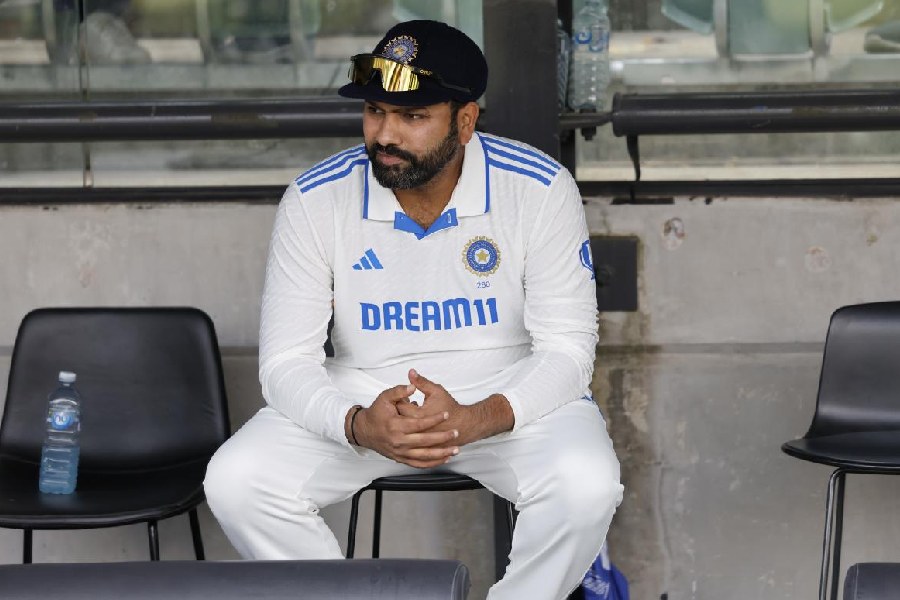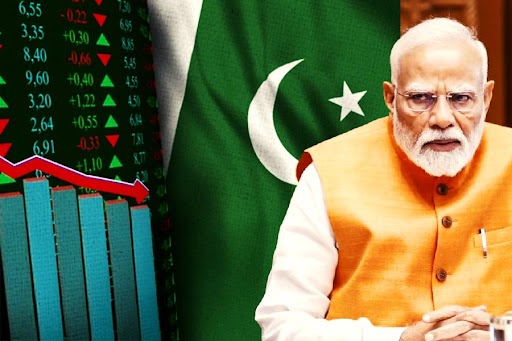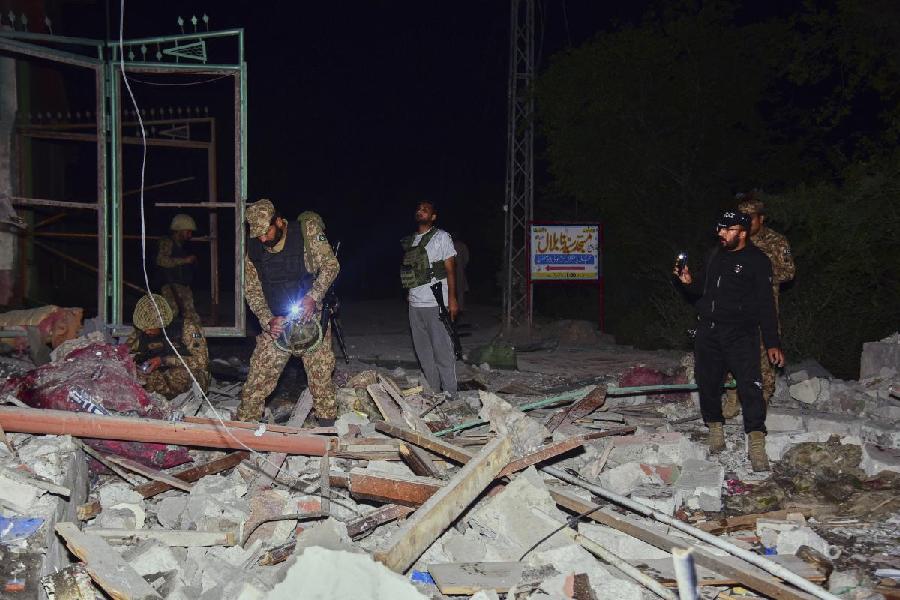|
|
| Mani Shankar Aiyar at the inauguration of the 150th anniversary celebrations of the “First War of Independence”, New Delhi, May 8 |
I must declare a vested interest in the revolt of 1857. Immediately after I finished my Master’s in history, I decided, much to the surprise of all my teachers, save one, to write a doctoral dissertation on the revolt in the area the British called Oudh — a quaint anglicization of the name Awadh. The reason that all my teachers were surprised at my choice of subject was the belief, common among most historians in the Seventies, that there was nothing new to be said about the revolt. The subject was sterile and all that had to be said had been said in the centenary year and its immediate aftermath.
The lone voice of encouragement came from Barun De, who believed that 1857 was an event which had not really been worked upon. There was another source of inspiration. This was the famous Cambridge historian, Eric Stokes, whose essays on the subject I had read with excitement and profit. I was to get to know Eric later and learn an enormous amount from him, till cancer claimed him very untimely.
The point of this autobiographical sojourn is to set the context for my surprise at the sudden burst of enthusiasm among historians about the great uprising. There is nothing like a state-sponsored anniversary to stoke the interests of historians in a subject. The adjective, state-sponsored, is used advisedly. In a country with as rich and as diverse a history as India’s, every year is an anniversary of something or the other. In June will come the 250th anniversary of the battle of Plassey. Is the Indian state celebrating that anniversary? The answer is no. The decision to celebrate the revolt of 1857 with some fanfare is based on the conclusion — put forward by some historians and accepted by the government of India — that the rebellion is worth celebrating because it represented India’s first war of independence.
I hold a dissenting view, since I believe that 1857 should be remembered but not commemorated. Let me try and explain my reasons for holding this particular opinion. The reasons are embedded in the events themselves.
One hundred and fifty years ago today, the sepoys in the cantonment of Meerut mutinied. They killed their superior officers and every single British man, woman and child they could find. They burnt the bungalows in which the white people lived, and destroyed all government offices and buildings. “Maro firanghi ko [Kill the white man]” was the cry and the destruction was near total. A group of sepoys, after having cut the telegraph wires to Delhi, sped off towards the old Mughal capital. Arriving there on the morning of May 11, they entered the walled city and the Lal Qila. They asked the old Mughal emperor, Bahadur Shah, to accept the nominal leadership of the revolt. Outside the Red Fort, violence and destruction reigned and Delhi passed out of British control by May 12. In both Meerut and in Delhi, common people, peasants from the surrounding countryside, artisans and the poor joined the sepoys in the killing, looting and destruction. A mutiny of the soldiery, as soon as it occurred, acquired the character of a general uprising.
The fall of Delhi was followed by the spread of the uprising all over north India. In station after station and cantonment after cantonment, the soldiers mutinied and killed white men, women and children. In every place, common people joined the sepoys. All over north India — from Delhi to Patna and from the Terai to Jhansi, British rule, one British officer noted, had collapsed “like a house made of cards’’. The Britons who had escaped the wrath of the rebels cowered in fear within the walls of the Residency in Lucknow, behind the “entrenchment’’ in Kanpur and in the Ridge in Delhi.
British administration was quick to recover from the shock and to retaliate. The shock grew, in the words of John Kaye, who wrote in the 19th century a magisterial history of what he called the Sepoy War, from “the degradation of fearing those whom we had taught to fear us’’. The retaliation was brutal. In the summer of 1857, through a series of Acts, individual Britons were given powers to judge and to execute any Indian they suspected of being a rebel. The result was devastating. Kaye wrote, “It is on the records of our British Parliament, in papers sent home by the Governor-General of India in Council, that ‘ the aged, women and children, are sacrificed, as well as those guilty of rebellion’. They were not deliberately hanged, but burnt to death in their villages. Englishmen did not hesitate to boast that they had ‘spared no one’.’’
The events of 1857 churned around a vicious cycle of violence. The rebels killed mercilessly without considerations of gender and age. Witness the massacre on the river in Kanpur where nearly the entire British population was killed in a spectacular show of rebel power. The British killed indiscriminately to punish a population that had transgressed the monopoly of violence that rulers have over the ruled.
The British won and, like all victors everywhere, they memorialized their triumph. In Kanpur, to take one example, they transformed the well into which the bodies of the victims of a massacre had been thrown into a shrine. A weeping angel carved in marble by Marochetti was placed over the well. The shrine was an exclusive preserve of the white man till August 15, 1947. On that day, people damaged the nose of the angel, which had to be removed. In its place, a statue of Tantia Topi was erected. One icon was replaced by another.
Today, as the celebrations begin to mark the 150th anniversary of the rebellion, some questions need to be asked: is 1857 an occasion to celebrate? Can the Indian state uphold the violence that is inextricably linked to that year? Can the Indian state say that it is loyal to the ideals of Mahatma Gandhi, the apostle of non-violence, and in the same breath celebrate 1857 when so many innocent people, on both sides, were brutally killed?
The questions are important because in India, there is no mode of remembering without celebrating. We commemorate to remember, sometimes even to forget. Eighteen fifty-seven is an event to remember, as all events of the past are; it is an event to comprehend and analyse because, as Jawaharlal Nehru wrote, it showed “man at his worst’’. That comprehension and analysis is best done outside the aegis of the State.

